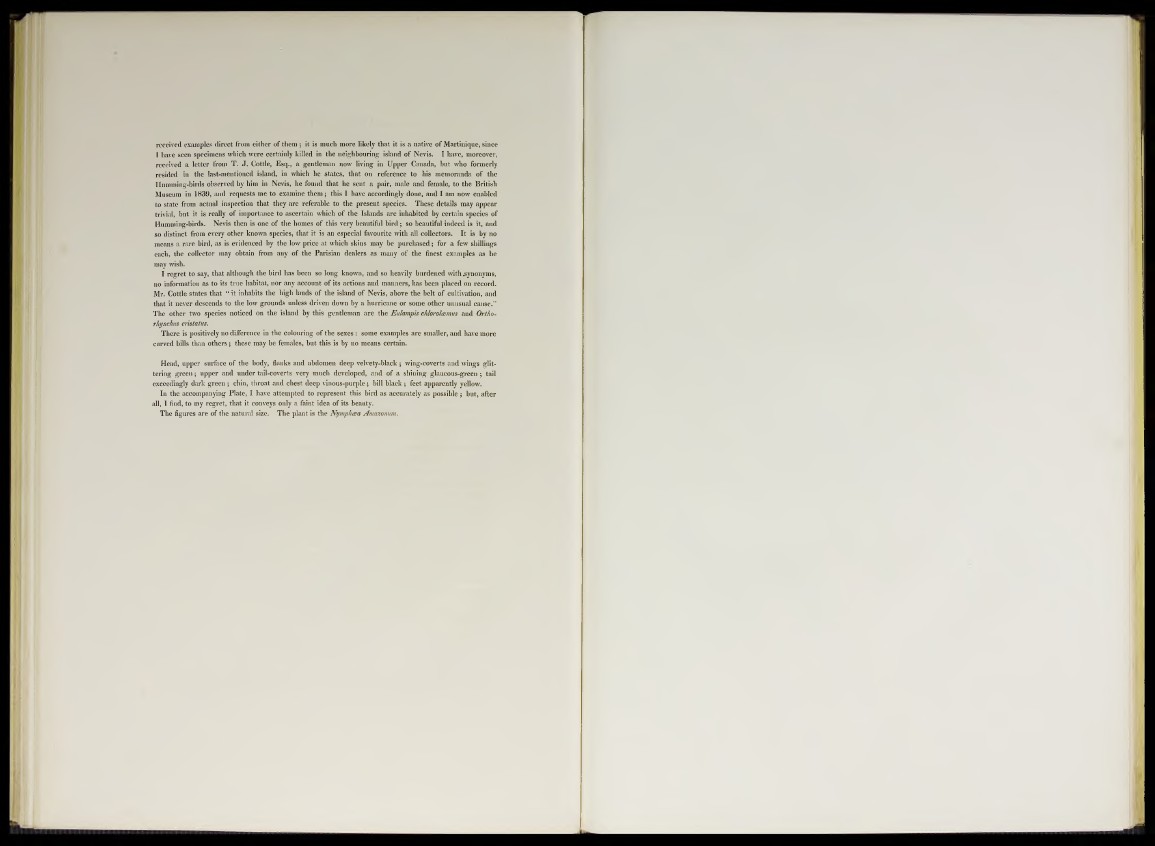
received examples direct from cither of thein:; it is much moré likely that it is a native of Martinique, since
I have seen specimens which were certainly killed in the neighbouring island of Nevis. I have, moreover,
received a letter from T. J. Cottle, Esq., a gentleman now living in Upper Canada, but wlio formerly
resided in the last-mentioned island, in which he States, that on reference to his memoranda of the
Humming-birds observed by him in Nevis, he found that he sent a pair, male and female, to the British
Museum in 1839, and requests me to examine them; this I have accordingly done, and I am now enabled
to state from actual inspection that they are referable to the present species. These details may appear
trivial, but it is really of importance to ascertain which of the Islands are inhabited by certain species of
Humming-birds. Nevis then is one of the homes of this very beautiful bird; so beautiful indeed is it, and
so distinct from every other known species, that it is an especial favourite with all collectors. It is by no
means a rare bird, as is evidenced by the low price at which skins may be purchased; for a few shillings
each, the collector may obtain from any of the Parisian dealers as many of the finest examples as he
may wish.
I regret to say, that although the bird has been so long known, and so heavily burdened withjsynonyms,
no information as to its true habitat, nor any account of its actions and manners, has been placed on record.
Mr. Cottle States that “ it inhabits the high lands of the island of Nevis, above the belt of cultivation, and
that it never descends to the low grounds unless driven down by a hurricane or some other unusual cause.”
The other two species noticed on the island by this gentleman are the Eulampis cllorolcemus and Ortho-
rhynchus cristatus.
There is positively no difference in the colouring of the sexes: some examples are smaller, and have more
curved bills than others; these may be females, but this is by no means certain.
Head, upper surface of the body, flanks and abdomen deep velvety-black ; wing-coverts and wings glit-
tering green; upper and under tail-coverts very much developed, and of a shining glaucous-green ; tail
exceedingly dark green ; chin, throat and chest deep vinous-purple; bill black ; feet apparently yellow.
In the accompanying Plate, I have attempted to represent this bird as accurately as possible; but, after
all, I find, to my regret, that it conveys only a faint idea of its beauty.
The figures are of the natural size. The plant is the Nymphoea Amazonum.